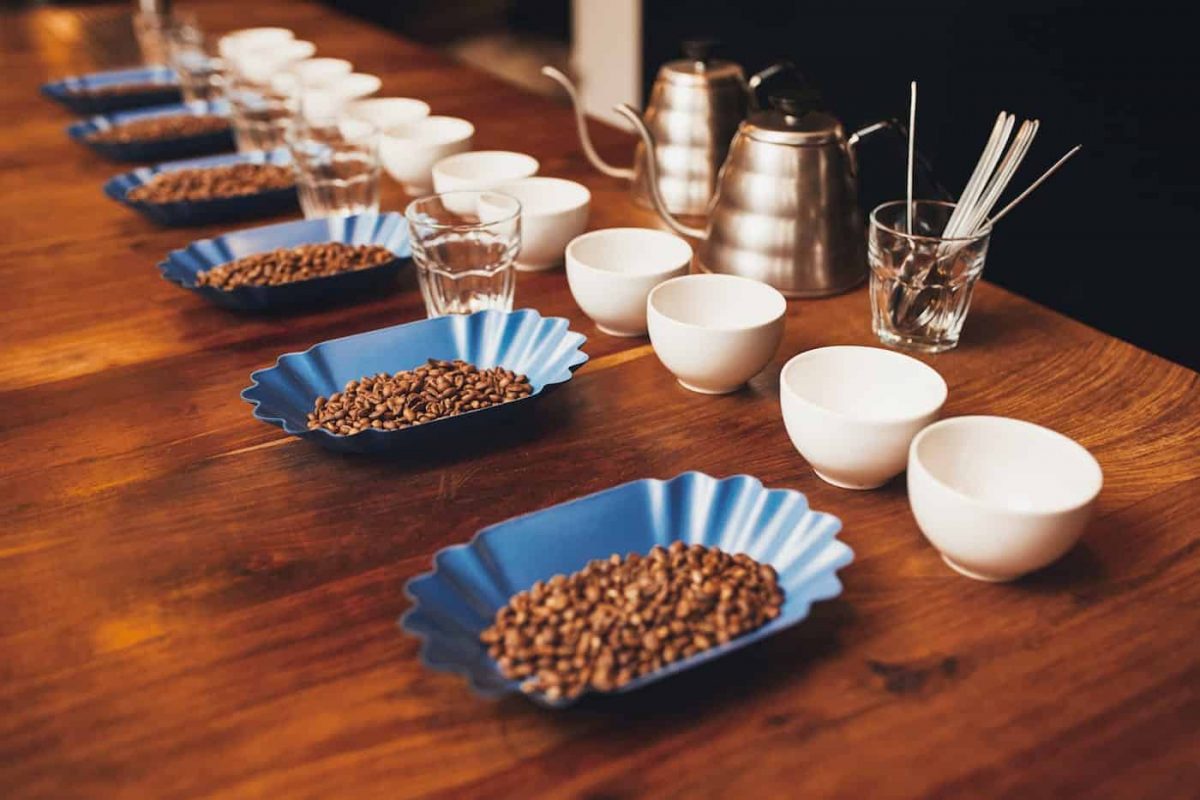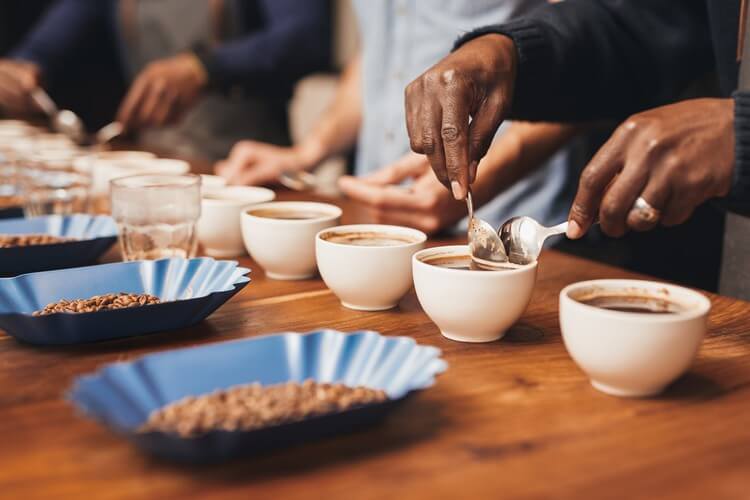What is Coffee Cupping? The Best Way to Taste Coffee

We all have our favorite coffees. It could be a certain roast, region, or even brewing method that attracts you to a cup. But have you ever thought why you prefer one particular coffee to another?
While coffee tasting, or ‘cupping,’ is complex to master, developing an appreciation for all the different components within a simple cup can help you enjoy the specialty coffee experience even more…
What’s the best way to ‘taste’ coffee?
If you want to start developing your coffee cupping skills, there are a few basic guidelines to follow to give you the best chance of identifying what’s known as the ‘flavor profile.’
Regarding preparing coffee for cupping, you can choose how ‘pro’ you go.
For a more professional approach, grind your beans to a coarse consistency, put them in a bowl and pour over water that’s just off the boil. Let the grounds steep for around three to four minutes. Use a spoon to break the crusty layer that’s formed on top and taste away (don’t forget to take the time to appreciate how the coffee smells).
For a more casual cupping, simply brew up a batch using your French press and pour into cups.

Unless you’re a cupping savant, don’t expect to ‘get’ all the different flavors immediately. Start simply by asking yourself whether the coffee is: nutty, floral, sweet, spicy, etc. Keep practicing, and sooner or later you’ll be able to identify more complex flavors.
A good tip for newbie cuppers is to buy a coffee that has information about the flavor profile on the packaging (or ask the retailer). This ‘cheat sheet’ approach can get you started by letting you know what flavors you should be identifying. Try a few like this, then taste ‘blind’ by covering up the flavor information and seeing if you can identify the notes by yourself.
If doing this alone seems a bit ‘nerdy,’ why not gather some coffee loving friends together and make an evening of it?
What am I actually tasting for?
So far, we’ve referred to flavor profiles, but there are several elements, or characteristics, that combine to produce the ‘quality’ of a particular coffee. As you taste, think about the coffees:
What is body?
A further characteristic to be found in coffee is its body. This term is used to describe how it feels in the mouth and on the tongue.
In simple terms, a coffee can feel light or heavy (referred to a full-bodied). Going deeper, a coffee can have a certain texture, such as watery or oily, with fuller bodied coffees having a more syrupy consistency.
Compare a cup of coffee from your Moka pot versus your drip coffee maker, for example. Where a coffee comes from can also effect its ‘mouth feel’, with Sumatran coffees tending to be fuller bodied than beans from Mexico.
The next time you shop for specialty coffee, take a look at how it’s described. Like wine, you’ll see coffees sold as ‘full-bodied’ or ‘medium-bodied,’ etc. Select one at each end of the scale and discover for yourself how they differ.
What if I really can’t identify the flavor profile and other characteristics?
Being able to identify all the different elements of coffee takes lots of practice. Just like with fine wine, it takes time and effort to develop a ‘tasting’ palette.
If you want to hone your skills, look for cupping events in your area and learn from the experts. However, for many of us, it’s enough to simply explore lots of different coffees and find ones that we enjoy, even if we can’t identify exactly why we like them.
That’s one of the great things about the world of specialty coffee – it can be as simple or as complex as you want it to be!